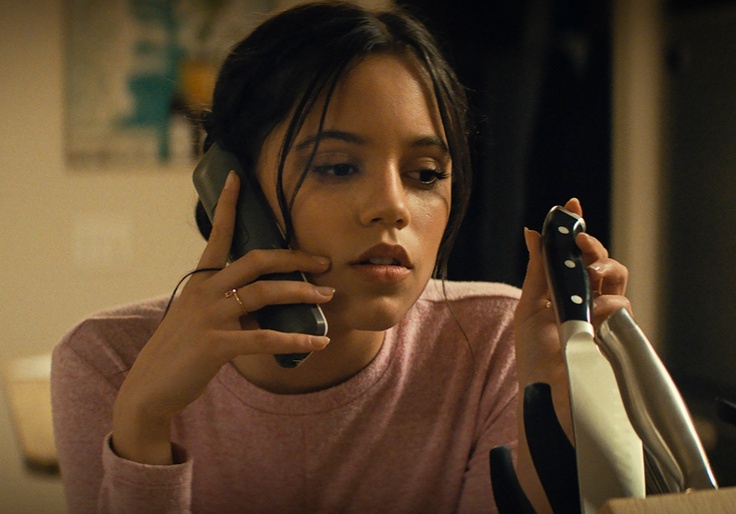In 1996, a wonderfully clever take on horror movies began with a dazzling sequence. A high school kid played by Drew Barrymore answers the phone in her empty house. A flirty caller asks her if she likes scary movies. As she wanders around, the call becomes ominous, then threatening, then terrifying. Thirteen minutes later, her boyfriend is dead on the porch outside, a masked man has entered the house, and Drew is killed by his knife.
In this one scene, working from a script by Kevin Williamson (no, not our Kevin Williamson), the director Wes Craven encapsulated 25 years of the micro-budget modern horror genre he had helped create with The Last House on the Left in 1972. Scream is violent and frightening, but it’s also extraordinarily witty—a quality one really doesn’t associate with horror. It’s a movie about kids who are obsessed with scary movies, to such an extent that two of them figure out how to come up with a new twist on the genre by teaming up as the same serial killer.
Now there’s a new version, also called Scream, which is about horror movie aficionados who are obsessed with being horror movie aficionados—representatives of the subculture that has come to be known as "toxic fandom." It opened to very good but not great box office numbers, and I think the reason it didn’t do as well as it might have is that you just can’t beat the original. It updated, parodied, and embodied the form, and its earlier sequels then sought to update, parody, and embody other such forms (the horror sequel, and the horror movie based on actual events).
The new movie is a re-quel—an effort to reproduce and refresh the original by repeating its story beats, featuring original characters in sadder-but-wiser guise, and bringing it into the present day. The problem is that the new Scream functions like a first-generation color Xerox of a great photograph. It’s all there; it’s just muddier. The conversations about horror movies and their shortcomings feature talk about recent entries like The Babadook and Hereditary, sometimes referred to as "elevated horror." The thing is that those films are already self-conscious about their place in the horror canon. They exist in a world after Scream, which introduced the idea of scary movies as a self-reflective subject.
So the opening scene is reproduced but updated with cellphones and automatic door-locking apps and text messages, but it’s not better. What’s good about it, and it’s good, is what was good about the original—the pacing, the story beats, and the growing terror of the eventual victim. But when you’ve seen it done perfectly the first time, what’s the point of seeing it a second time?
The kid actors here are far more annoying than the ones in the original, in part because they have been cast with an eye toward a new orthodoxy—not a storytelling orthodoxy, but the diversity orthodoxy of 2022, which is something even a knowing meta picture like the new Scream would dare not make a note of. And, as with the opening scene, they are just not as good.
The interesting thing is that the callback characters really are pretty good, and they don’t conform to the re-quel model. That’s particularly true of David Arquette, who played a young cop in 1996 and here plays the same guy as a broken-down and forcibly retired sheriff who just sustained too many injuries from the various slashers in the previous movies to function well. He is lost and touching and brings a kind of rueful honesty to the frankly ludicrous shenanigans.
So does Neve Campbell, who was the ultimate target in the original and here is a cool, contained, seen-everything no-nonsense survivor in her 40s. Courteney Cox actually manages to transcend her awful plastic surgery as the reporter who not only has to live through another serial-killer attack spree but must deal with Arquette, her ex-husband (not only when it comes to their characters but also in real life).
The first two-thirds of the new Scream are fun. But the last third, when it has to resolve its plot and let you in on who the new killers are, is kind of a train wreck—because you can only succeed with the "two killers wearing the same killer mask and robe" reveal once. In this way, as in others, it might have been better just to remake the original rather than "re-quelize" it. The filmmakers, whose names aren’t even worth sharing here, would have had to take the risk of being worse, but as it is, they produced something worse anyway.
